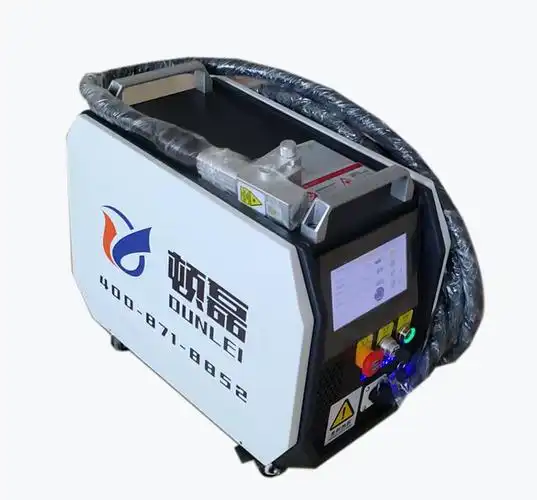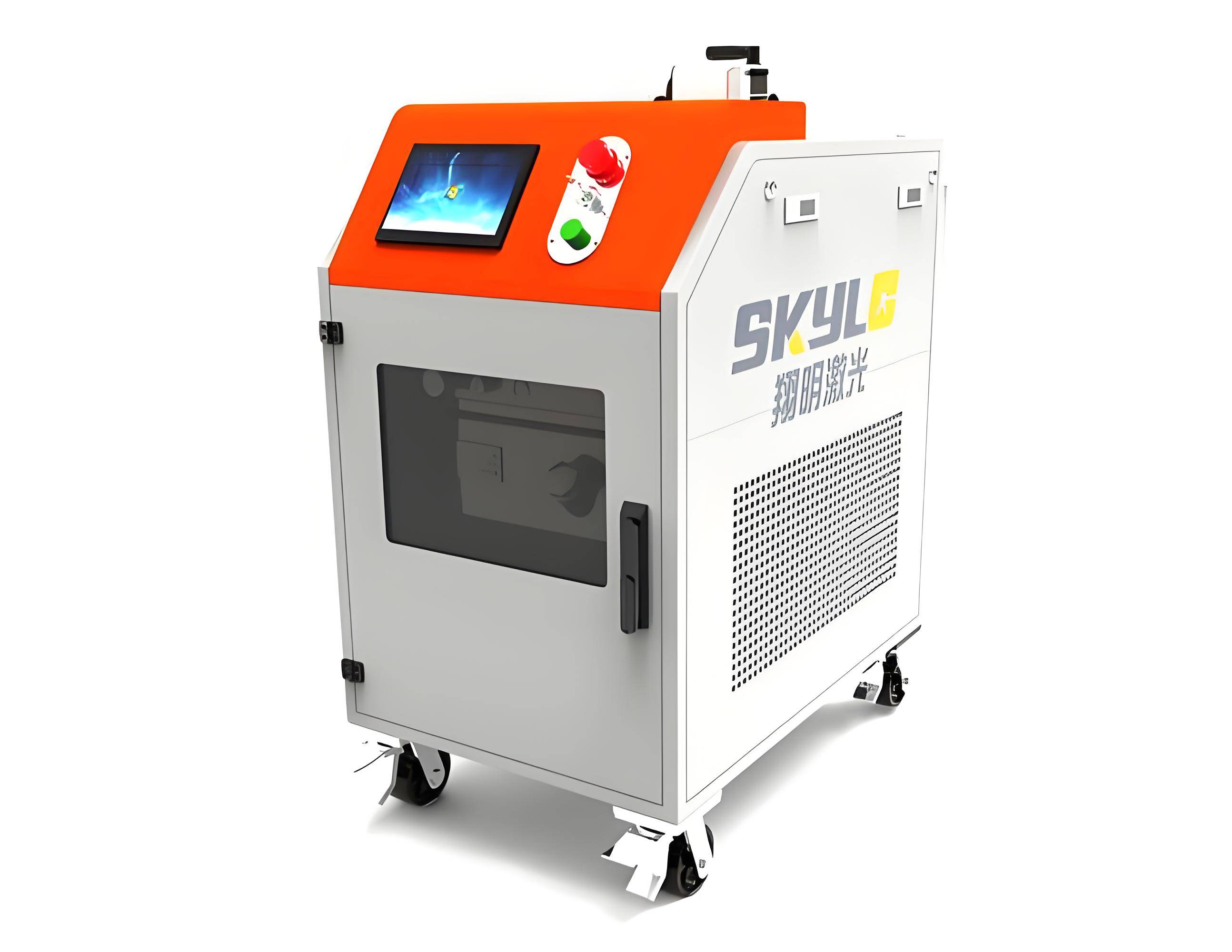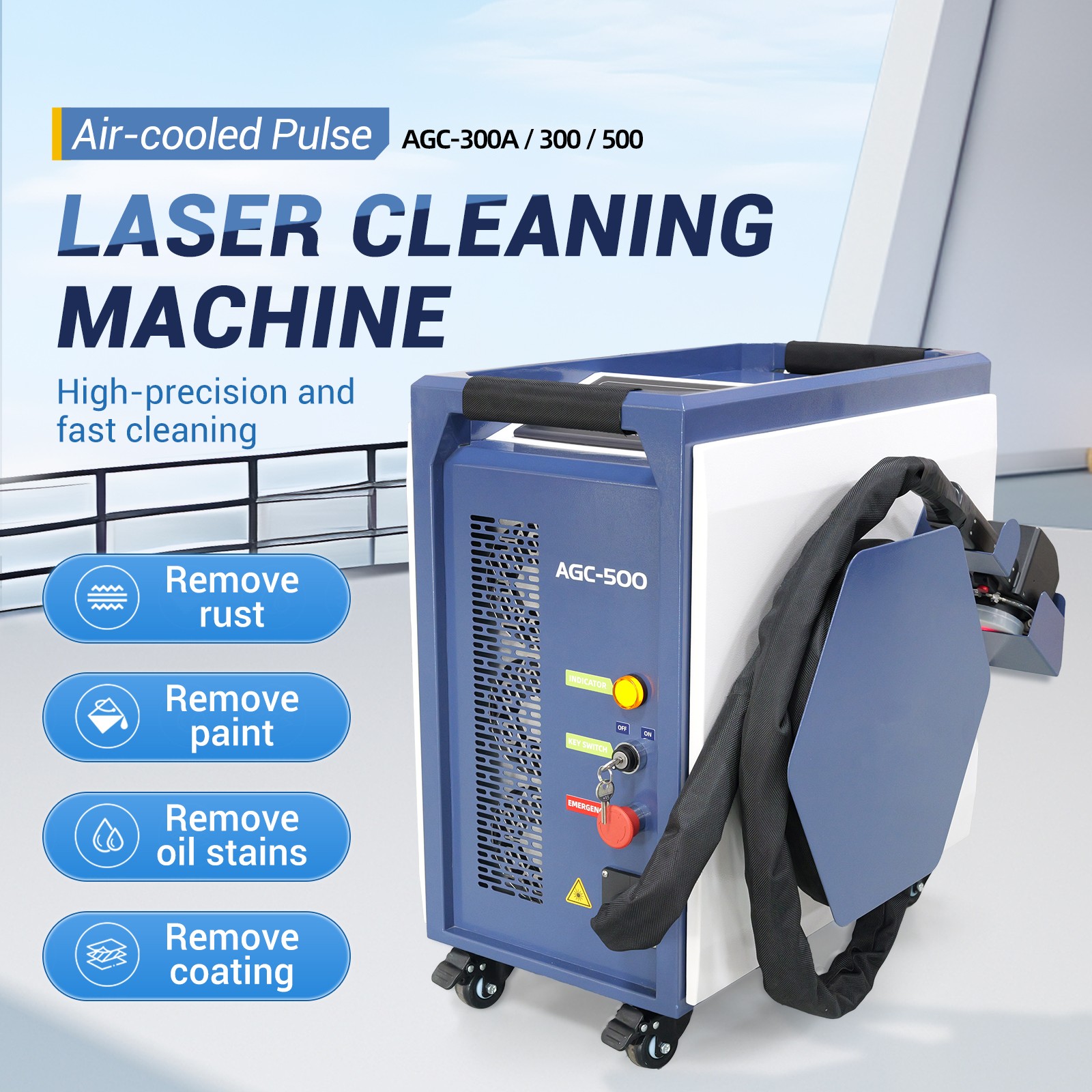After spending more than a decade in the industrial cleaning and maintenance sector, I’ve witnessed laser rust removal machines evolve from bulky, manual tools to sophisticated systems that streamline workflows. One question that’s been cropping up more frequently, especially from facility managers and tech-savvy operators, is whether these machines support remote control. It’s a natural curiosity in an era where automation and smart technology are transforming industries. Remote control could mean greater efficiency, safer operations, or even integration into larger automated systems. Drawing from my hands-on experience with these machines, I’ll explore the current state of remote control capabilities, the challenges involved, and practical ways to achieve similar outcomes, all while keeping things clear and grounded.

The Appeal of Remote Control in Laser Rust Removal
Laser rust removal machines are powerful tools that use high-energy laser beams to vaporize rust from metal surfaces, leaving them clean and ready for further processing. They’re used in industries like manufacturing, shipbuilding, automotive restoration, and even heritage conservation. The idea of controlling these machines remotely is appealing for several reasons. Imagine operating a laser from a control room, adjusting settings via a tablet, or programming a machine to clean a large surface autonomously. It could save time, reduce operator exposure to hazardous environments, and fit seamlessly into modern, connected factories.
In my years working with these systems, I’ve seen how small technological advancements—like better optics or pulse control—can make a big difference. So, let’s dive into whether remote control is a reality for laser rust removal machines and what it entails.
Current State of Remote Control in Laser Rust Removal Machines
To answer the question directly: some laser rust removal machines do support remote control, but it’s not a universal feature, and the extent of remote functionality varies widely. Most commercial models are designed for manual or semi-automated operation, with operators using handheld scanners or control panels. However, advancements in IoT (Internet of Things) and industrial automation have led to a growing number of machines with remote or programmable capabilities. Let’s break down what’s available based on my experience.
1. Basic Remote Control Features
Many high-end laser rust removal machines, particularly those from leading manufacturers, offer basic remote control options. These typically include:
Wireless Control Panels: Some machines come with wireless interfaces, allowing operators to adjust power, pulse frequency, or scanning patterns from a short distance (e.g., 10-50 meters). I’ve used these in shipyards, where operators needed to stay clear of confined spaces while cleaning large steel plates.
Mobile Apps or Tablets: A few advanced models support proprietary apps that connect via Wi-Fi or Bluetooth. These let you monitor real-time performance, tweak settings, or start/stop the laser from a mobile device. In one factory I consulted for, the maintenance team loved using a tablet to control a laser cleaning system during downtime, as it let them multitask.
Remote Start/Stop: Even mid-range machines often have remote start/stop capabilities, either through a wired foot pedal or a wireless trigger. This is less about full remote control and more about giving operators flexibility in positioning.

2. Programmable and Automated Systems
For larger-scale operations, some laser rust removal machines are integrated into robotic or CNC (Computer Numerical Control) systems, which can be considered a form of remote control. These setups allow:
Pre-Programmed Patterns: You can program the laser to follow specific cleaning paths, ideal for repetitive tasks like cleaning conveyor belts or large metal sheets. I’ve seen this in automotive plants, where robotic arms equipped with laser heads cleaned car frames autonomously.
PLC Integration: Programmable Logic Controllers (PLCs) can connect laser systems to a central control system, enabling remote monitoring and operation as part of a smart factory. This is common in Industry 4.0 environments, where I’ve helped integrate lasers into automated production lines.
Cloud-Based Monitoring: A few cutting-edge models offer cloud connectivity, letting managers track performance metrics (like uptime or energy use) from anywhere. While this isn’t full remote control, it’s a step toward centralized oversight.
3. Limitations of Remote Control
Despite these advancements, remote control isn’t standard across all laser rust removal machines. Here’s why:
Safety Concerns: Lasers are high-risk tools, with beams that can cause severe eye or skin damage. Strict safety protocols, like interlocks and enclosed workspaces, often require manual oversight, limiting full remote operation.
Complexity and Cost: Adding remote control features increases the machine’s complexity and price. Many small businesses or restoration shops don’t need (or can’t afford) these capabilities, so manufacturers prioritize manual systems.
Line-of-Sight Requirements: For handheld laser scanners, operators need to aim the beam precisely, which is hard to do remotely without advanced robotics or cameras. I’ve found that even wireless controls are often limited to basic functions because of this.
Connectivity Challenges: Industrial environments can have unreliable Wi-Fi or interference from heavy machinery, making remote control less reliable. In one warehouse I worked in, we had to install repeaters to ensure stable wireless communication for a laser system.

Technologies Enabling Remote Control
To understand how remote control works in laser rust removal, it’s helpful to look at the technologies behind it. Based on my experience setting up and troubleshooting these systems, here are the key enablers:
IoT and Wireless Protocols: Wi-Fi, Bluetooth, or proprietary RF (radio frequency) systems allow communication between the laser and a remote device. For example, I’ve used machines with Bluetooth-enabled handhelds that let operators adjust settings from a few meters away.
Robotic Integration: Robotic arms or gantries equipped with laser heads can be controlled via software, enabling precise, remote-directed cleaning. In a shipbuilding project, we used a robotic laser system to clean hull sections, controlled from a nearby workstation.
Software Interfaces: Modern laser machines often come with software for PCs or tablets, offering graphical interfaces to adjust parameters or monitor performance. I’ve trained operators to use these interfaces to streamline setup times.
Sensors and Feedback Systems: Advanced machines use sensors to monitor surface conditions (e.g., rust thickness or temperature) and adjust the laser automatically. These can be linked to remote systems for real-time data, which I’ve seen improve efficiency in large-scale operations.
Here’s a table summarizing remote control options:
|
Feature |
Description |
Best Use Case |
Limitations |
|---|---|---|---|
|
Wireless Control Panel |
Adjust settings from a short distance |
Confined spaces, mobile operations |
Limited range, basic functions |
|
Mobile App/Tablet |
Monitor and control via Wi-Fi/Bluetooth |
Multitasking, small teams |
Requires stable connectivity |
|
Robotic/CNC Integration |
Automated cleaning with programmed paths |
Large-scale, repetitive tasks |
High cost, complex setup |
|
Cloud-Based Monitoring |
Track performance remotely |
Factory oversight, maintenance |
Not full control, data-focused |
Practical Considerations for Implementing Remote Control
If you’re considering a laser rust removal machine with remote control—or want to add it to an existing system—here’s what I’ve learned from years of helping clients:
1. Assess Your Needs
Not every operation requires remote control. For small shops or one-off restoration projects, manual operation is often sufficient. Remote control shines in scenarios like:
Large Surfaces: Cleaning ship hulls, bridges, or pipelines, where operators need to cover vast areas efficiently.
Hazardous Environments: Places with toxic fumes, confined spaces, or high-risk conditions, where keeping operators at a distance is safer.
Automated Workflows: Factories integrating lasers into production lines, where remote control aligns with Industry 4.0 goals.
In a metal fabrication plant I worked with, remote control via a PLC system reduced operator fatigue and sped up cleaning by 25% for large steel beams.
2. Check Manufacturer Offerings
When shopping for a machine, ask about remote control features. High-end brands often offer modular systems where you can add wireless controls, software interfaces, or robotic integration. I always recommend checking the spec sheet for terms like “IoT-ready,” “wireless interface,” or “PLC compatibility.” If you already own a machine, contact the manufacturer to see if retrofitting is possible—some models support aftermarket upgrades.

3. Invest in Safety
Remote control doesn’t eliminate safety risks. Laser safety protocols are non-negotiable, whether you’re operating manually or remotely. Ensure:
Protective Enclosures: Contain the laser beam to prevent reflections, especially in automated setups.
Emergency Stops: Remote systems should have accessible kill switches, both locally and at the control point.
Operator Training: Even remote operators need training on laser hazards and system limits. I’ve spent hours drilling safety into teams to avoid accidents.
4. Ensure Reliable Connectivity
For wireless remote control, a stable network is critical. Industrial environments can be tough on Wi-Fi, so consider:
Dedicated Networks: Set up a separate Wi-Fi network for the laser to avoid interference.
Repeaters or Mesh Systems: Boost signal strength in large facilities. In one warehouse, we installed a mesh network to ensure reliable tablet control of a laser system.
Backup Controls: Always have a manual override in case connectivity fails.
5. Budget for Upgrades
Remote control features add to the upfront cost—sometimes by 20-50% for robotic or IoT-enabled systems. Weigh the cost against the benefits, like labor savings or improved safety. For a small restoration shop I advised, a basic wireless control panel was enough, saving them from splurging on a fully automated system.
Workarounds for Machines Without Remote Control
If your machine doesn’t support remote control, or you’re not ready to invest in a new system, here are some workarounds I’ve used:
Extend Control Cables: Many machines allow longer cables for control panels or foot pedals, giving operators more distance from the work area.
Use Mobile Workstations: Set up a portable control station with a laptop or tablet near the machine, mimicking remote operation.
Automate Repetitive Tasks: For fixed-position cleaning, use jigs or fixtures to hold the workpiece, reducing the need for constant manual adjustments. In a pipe-cleaning project, we built a rotating jig that let one operator manage multiple pieces with minimal intervention.
Monitor with Cameras: Install cameras to observe the cleaning process from a safe distance, even if you can’t control the laser remotely.

Advantages of Remote Control
To give you a balanced view, here are the pros and cons of remote control in laser rust removal, based on my observations:
Pros:
Safety: Keeps operators away from fumes, noise, or confined spaces.
Efficiency: Speeds up large-scale or repetitive tasks, especially with automation.
Flexibility: Allows multitasking or centralized control in smart factories.
Data Insights: Cloud-based monitoring provides performance metrics for optimization.
Cons:
Cost: Adds to equipment and setup expenses.
Complexity: Remote systems require more training and maintenance.
Reliability: Connectivity issues can disrupt operations.
Safety Risks: Still requires rigorous safety measures, as lasers remain hazardous.
Real-World Example
A few years ago, I helped a large automotive plant integrate a laser rust removal system for cleaning chassis components. They wanted remote control to align with their automated assembly line. We chose a fiber laser with PLC integration, allowing operators to control the laser from a central control room via a touchscreen interface. The system cleaned parts autonomously, following pre-programmed path, and sent alerts for maintenance needs via cloud monitoring. It cut labor costs by 30% and the operators appreciated the safer, less hands-on setup. For smaller jobs, though, they still used handheld lasers, as full automation wasn’t cost-effective for one-off tasks.
Safety First: A Non-Negotiable
Whether remote or manual, laser rust removal demands uncompromising safety. Class 4 lasers, common in these machines, can cause instant eye or skin burns. Remote control can reduce exposure, but you still need:
Wavelength-Specific Eyewear: Protect against 1064 nm or 1070 nm beams, typical fiber lasers).
Enclosed Workspaces: Prevent stray beams, especially in automated systems.
Training and Protocols: Ensure all operators, remote or not, understand laser hazards. I’ve seen a near-miss where a reflected beam hit an untrained worker—luckily, no injury, but it was a wake-up call.

Future of Remote Control in Laser Rust Removal
The industry is moving toward greater automation, and I’m excited about where remote control is headed. Advances in 5G networks could make wireless control more reliable in large facilities, while AI-driven systems might optimize cleaning paths in real-time, reducing the need for manual input. In the next 5-10 years, I expect more machines to offer out-of-the-box remote capabilities, especially as smart factories become the norm. For now, though, the focus is on balancing cost and functionality, with high-end systems leading the charge.
Wrapping It Up
So, do laser rust removal machines support remote control? Yes, to an extent—some offer wireless panels, apps, or robotic integration, but it’s not a standard feature, and full remote operation is limited by safety and complexity. If you’re eyeing remote control, assess your needs, check manufacturer options, and weigh the costs carefully. If it’s not feasible, workarounds like extended cables or automation jigs can bridge the gap.
From my years tinkering with these machines across factories, shipyards, and restoration shops, I’ve learned that the right setup can transform how we tackle rust. Whether you’re cleaning a single antique or a fleet of steel beams, a little tech know-how goes a long way. Curious about specifics or planning a project? Dive into the Q&A below or consult a laser expert to find your best path forward.
Related Questions and AnswersQ: What’s the easiest way to add remote control to an existing laser rust removal machine?
A: Check if your machine supports wireless control panels or software upgrades. If not, extending control cables or using mobile workstations can mimic remote operation cost-effectively.
Q: Are fully automated laser systems worth the investment?
A: For high-volume, repetitive tasks (e.g., factory production), yes, due to labor and time savings. For small shops, manual or semi-automated systems are usually sufficient.
Q: How safe is remote control for laser rust removal?
A: It’s safer for operators by reducing exposure to fumes or confined spaces, but it doesn’t eliminate laser hazards. Protective eyewear, interlocks, and training are still critical.
Q: Can I use remote control in areas with poor Wi-Fi?
A: It’s challenging—unreliable Wi-Fi can disrupt operation. Use dedicated networks, repeaters, or wired alternatives like PLC systems for stability.
Q: What’s the future of remote control in laser rust removal?
A: Expect more IoT-enabled machines, 5G connectivity, and AI optimization in the next decade, making remote control more accessible and powerful, especially in smart factories.






